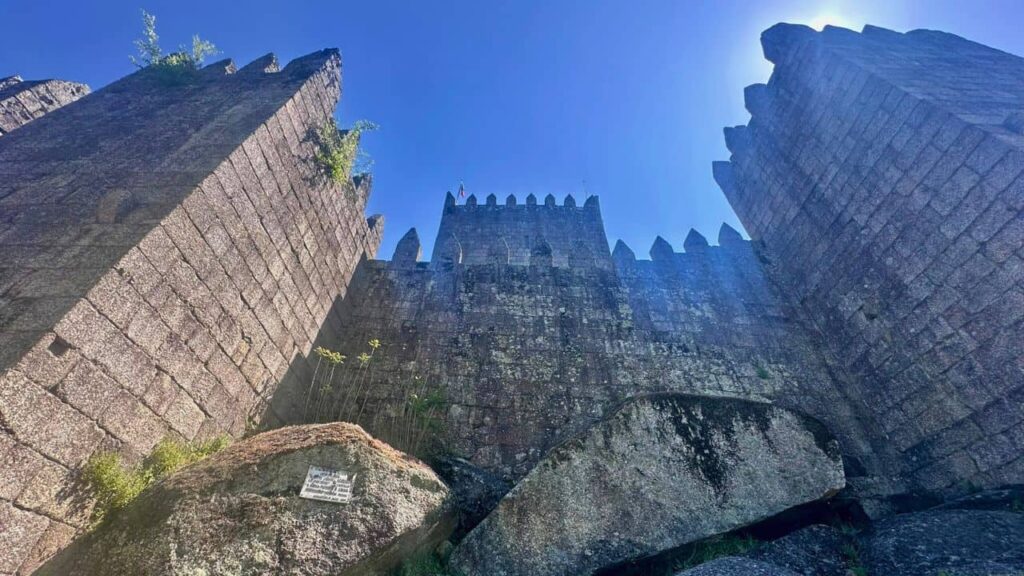
During our vacation in Vila Nova de Gaia and Porto, we decided to take a day trip to Guimarães. Often referred to as the birthplace of Portugal, Guimarães is a UNESCO World Heritage Site known for its history, stories, and medieval architecture.
[This article contains affiliate links to trusted partners.]
Because we only had one day, we decided not to roam aimlessly and instead opted for a private guided walking tour. After browsing a few tour sites, we booked half day outing with InsighTours through GetYourGuide.
To get to Guimarães from Porto, you can either take the train or use a rideshare. We initially planned to take the train, but a strike disrupted the schedules, and we couldn’t find an option that fit the timing of our tour. So, instead, we used the Bolt rideshare service. Guimarães is about a 50-minute drive from Porto, so the trip wasn’t long at all.
We arrived in Guimarães with some time to spare before our tour and decided to look for coffee. We found ourselves at Adega Restaurante Parente, where we each enjoyed an espresso. While there, we chatted with the owner, who turned out to be a former footballer for Esporte Clube Vitória, a Brazilian team.
Guimarães Castle
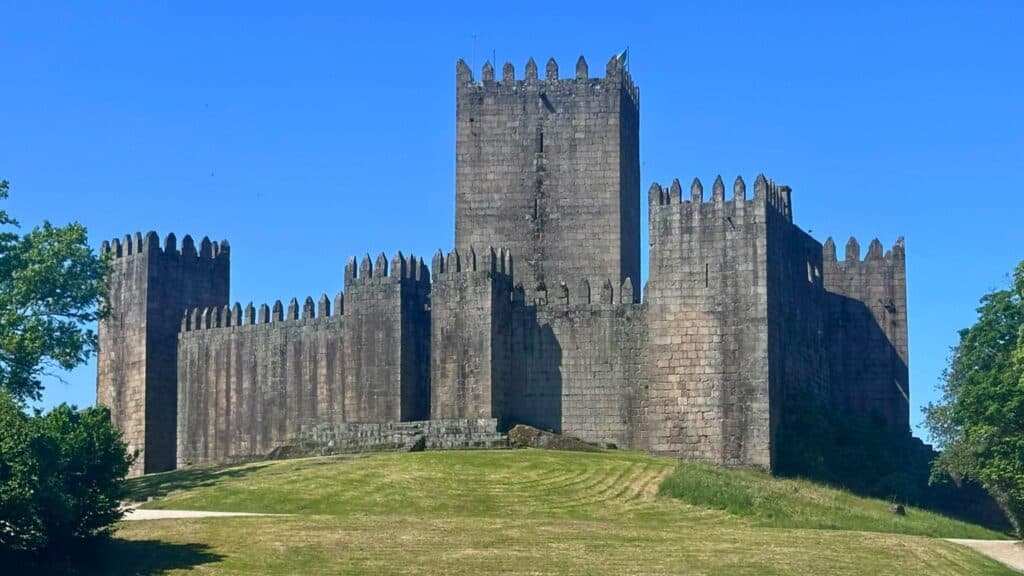
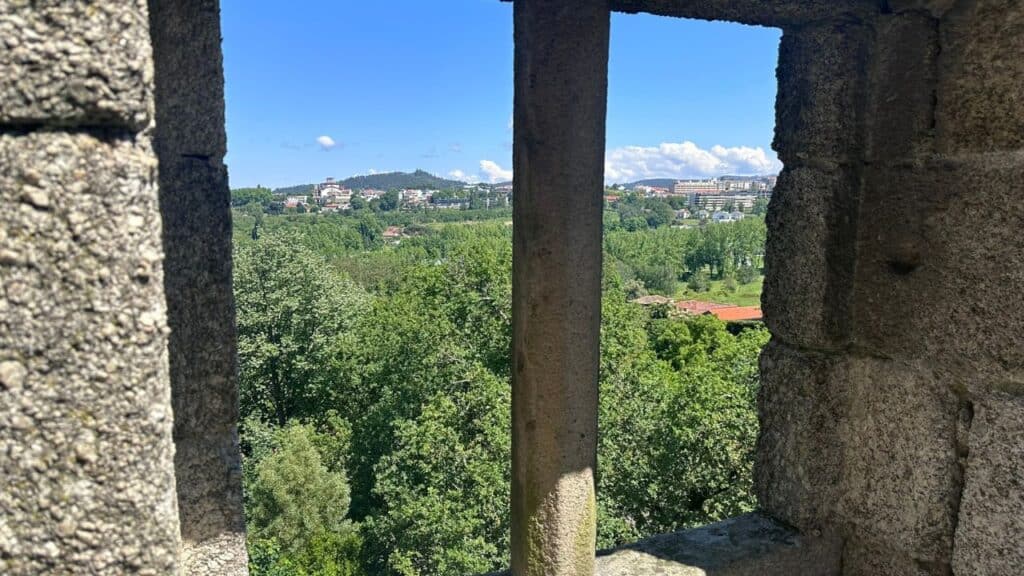
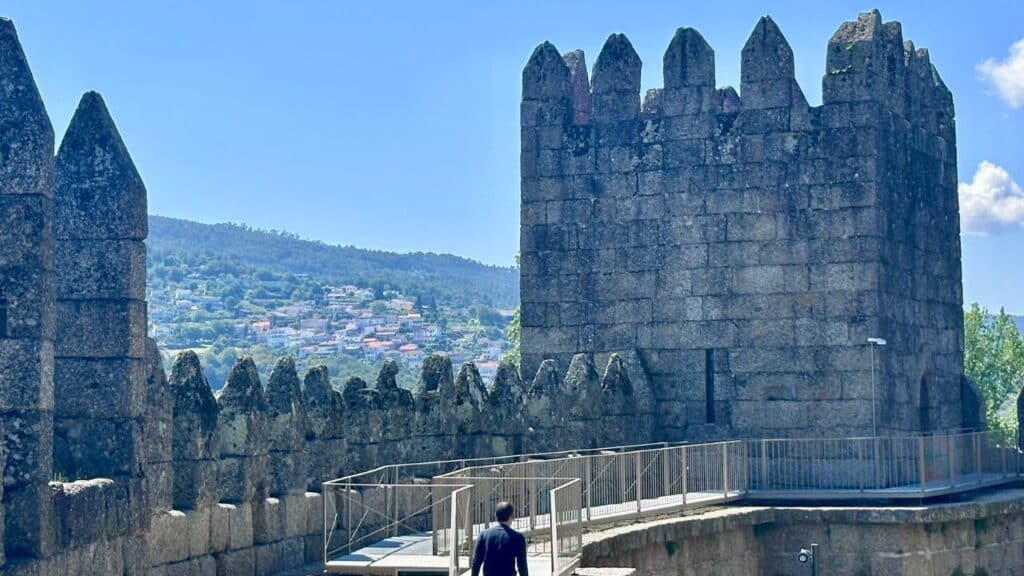
During our tour, we were able to enter Guimarães Castle and explore its grounds. Today, mainly the outer walls remain standing, but we were able to climb the stairs and enjoy lovely views of the city. As we looked out from the ramparts, our guide shared a fascinating and detailed account of the castle’s long history.
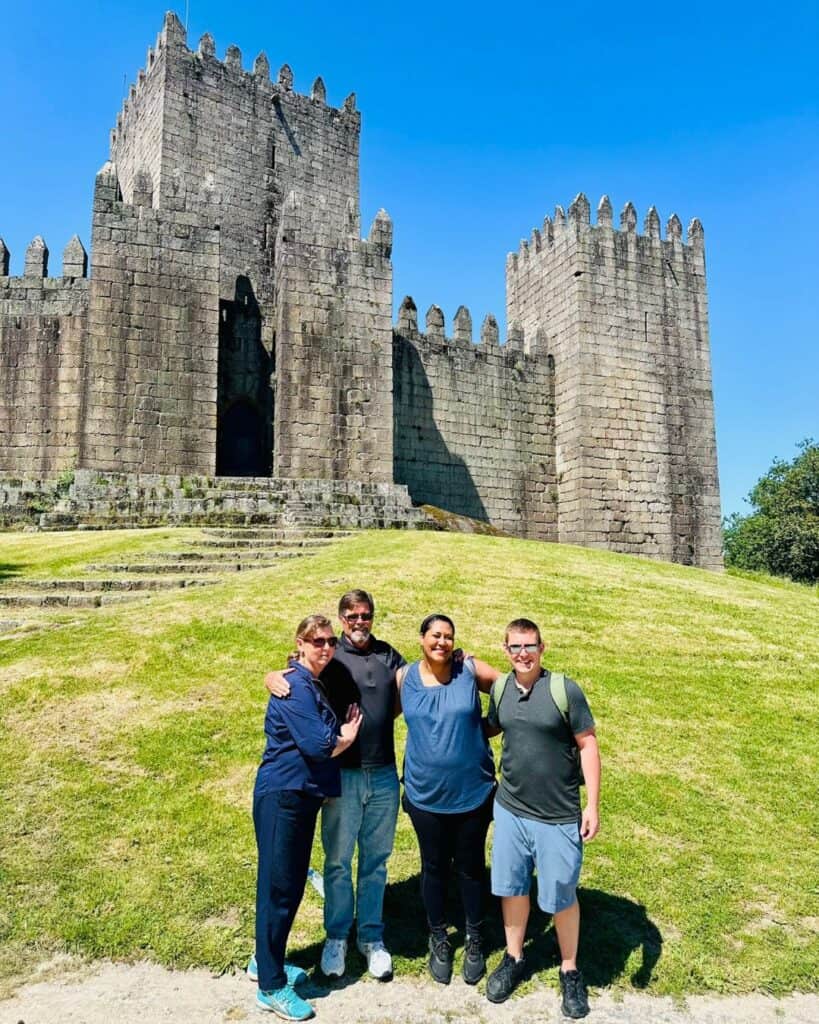
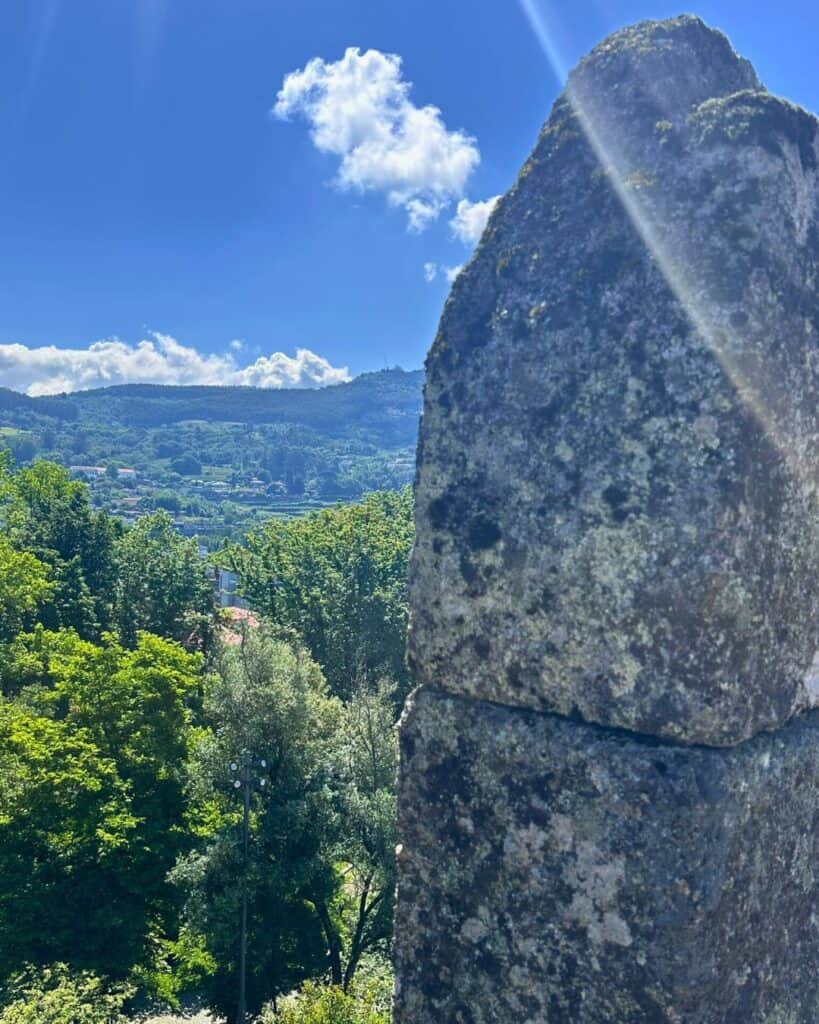
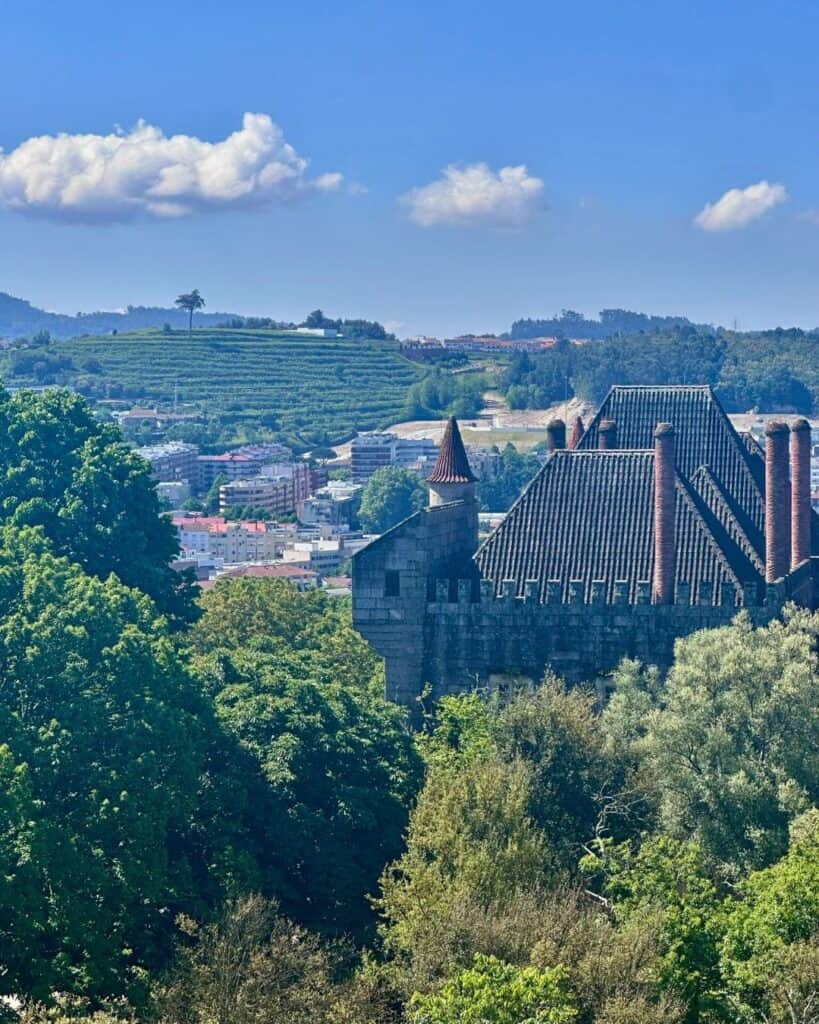
Guimarães Castle was built in the 10th century to defend the settlement from Viking and Moorish raids. It played a crucial role during the 12th century as the stronghold of Count Henry of Burgundy and his son Afonso Henriques, who would become Portugal’s first king after leading the fight for independence. Today, it stands as a national monument that symbolizes the birthplace of Portugal.
Church of São Miguel do Castelo

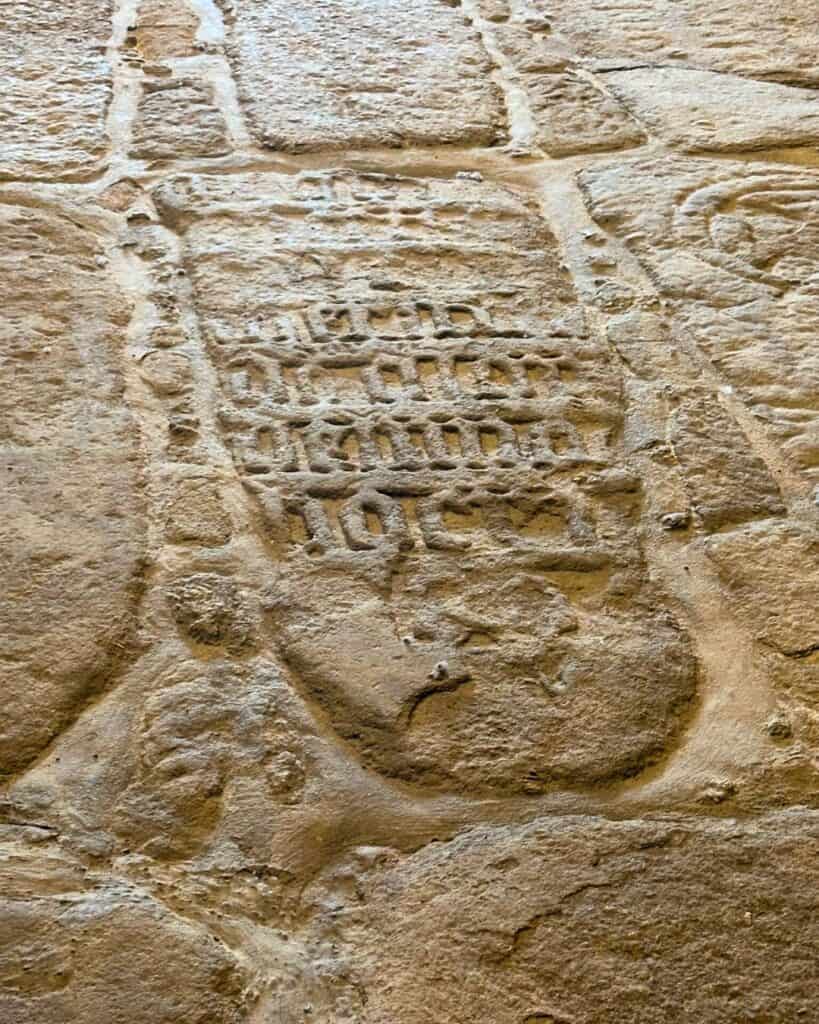
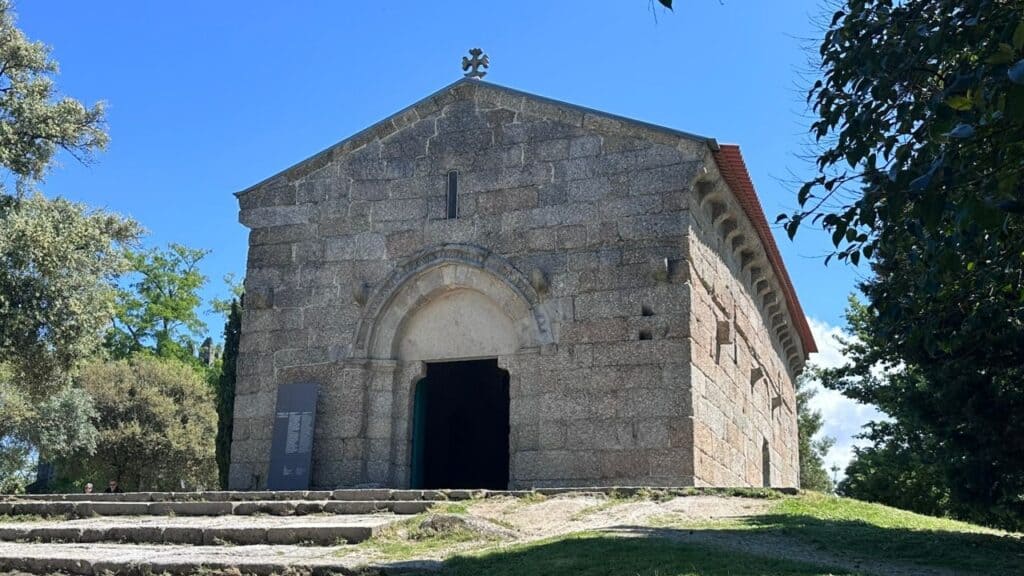
Next, we took a short walk over to the Church of São Miguel do Castelo. Dating back to the 12th century, it is one of the oldest Romanesque buildings in Portugal.
Tradition holds that Afonso Henriques was baptized here, adding to its national significance. Despite its modest size, the church has been carefully preserved and restored, maintaining its simple stone architecture.
As we were leaving the Church of São Miguel do Castelo, we noticed several cork trees growing on the property. Touching one for the first time, we were intrigued that it felt exactly like a wine cork in its natural form.
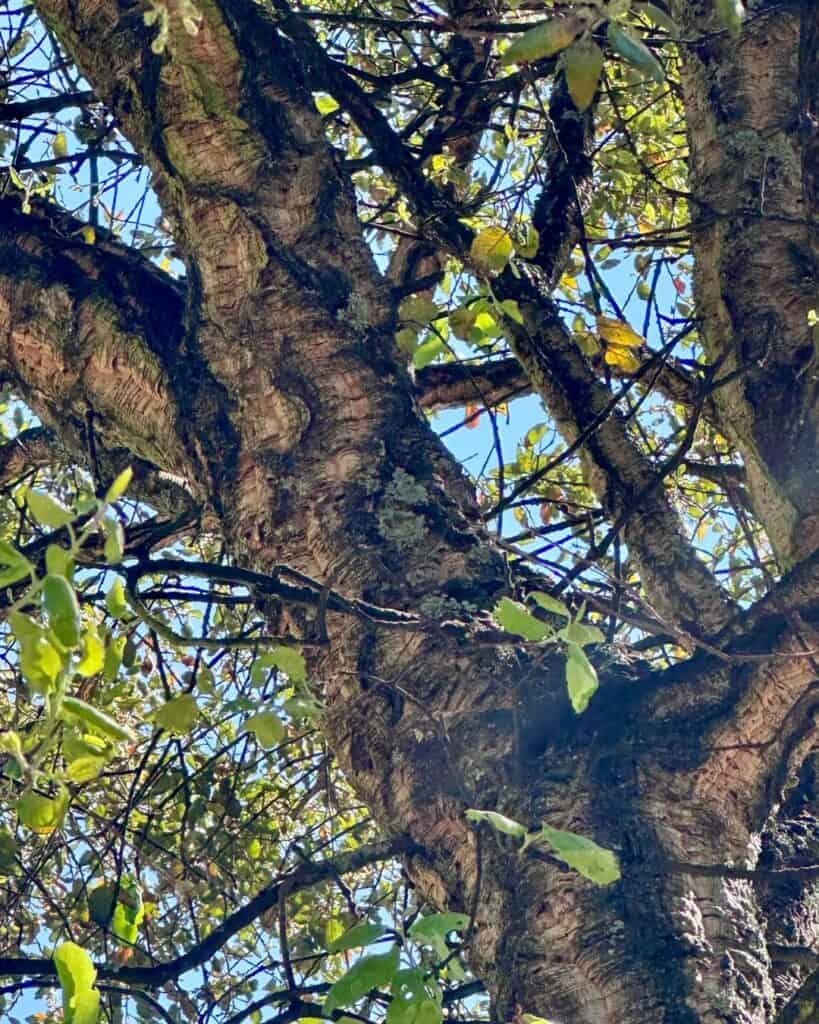
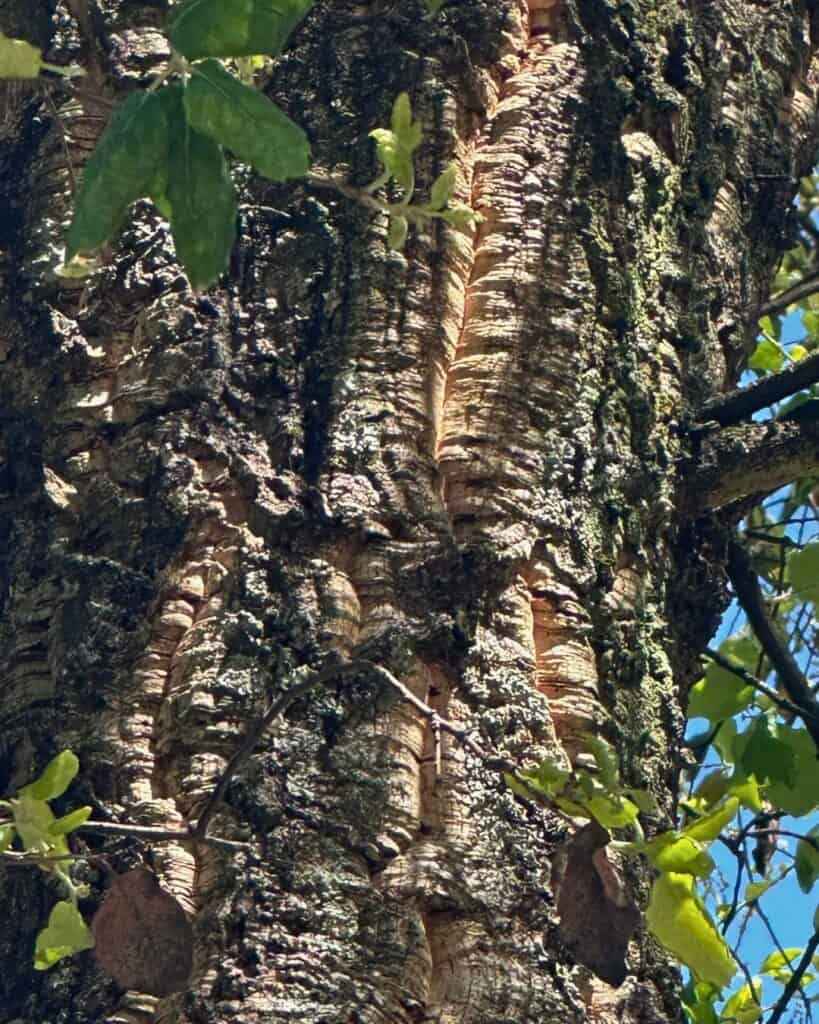
Cork plays a significant role in Portugal’s economy, used not only for sealing wine bottles but also in flooring, footwear, and other high-quality products, thanks to its strength and versatility.
Palace of the Dukes of Braganza
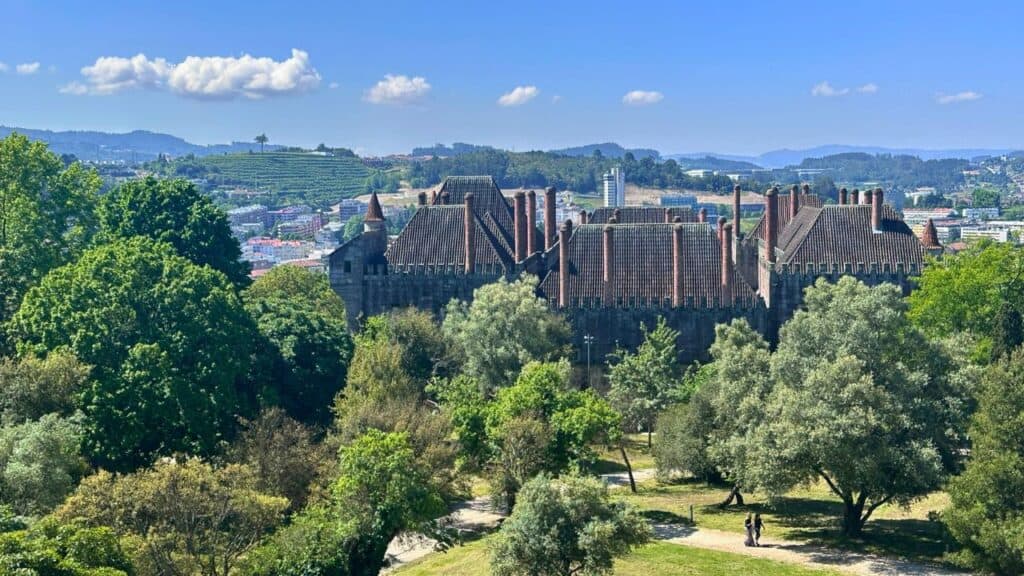
The Palace of the Dukes of Braganza was built in the 15th century by Afonso. Its distinctive architecture features Gothic and Renaissance elements, with thirty-nine tall chimneys inspired by French manor houses. Today, the palace is a museum featuring furniture, tapestries, and artifacts that reflect Portugal’s heritage.
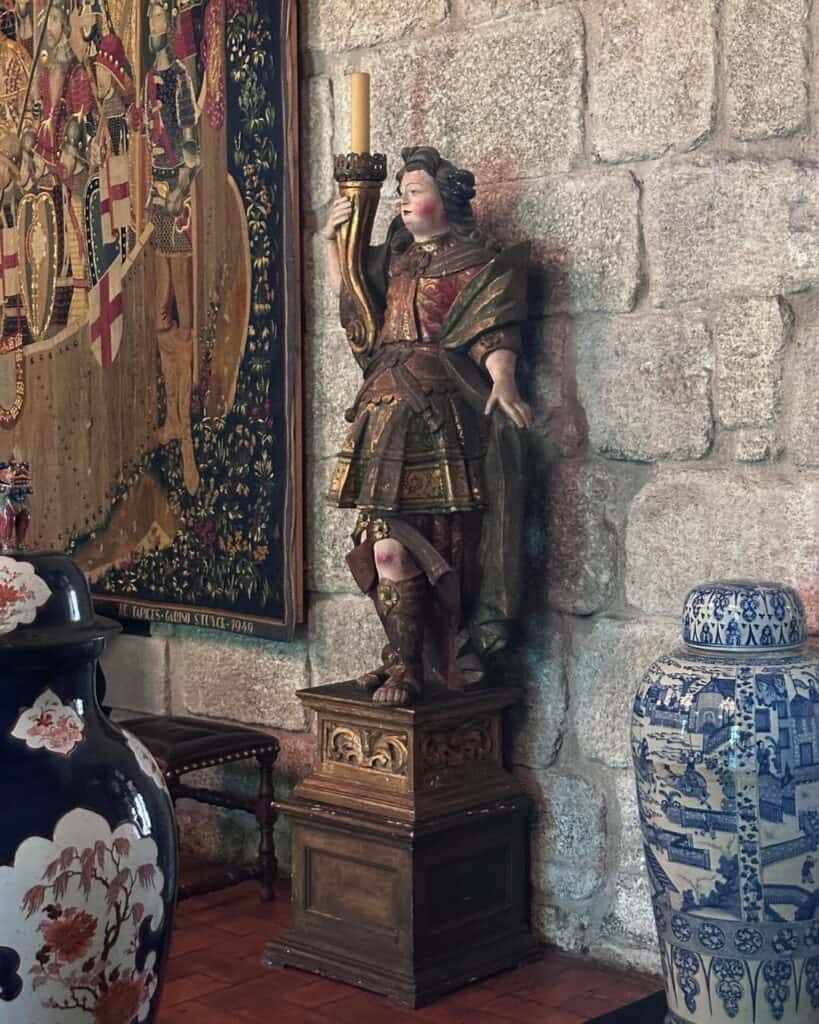
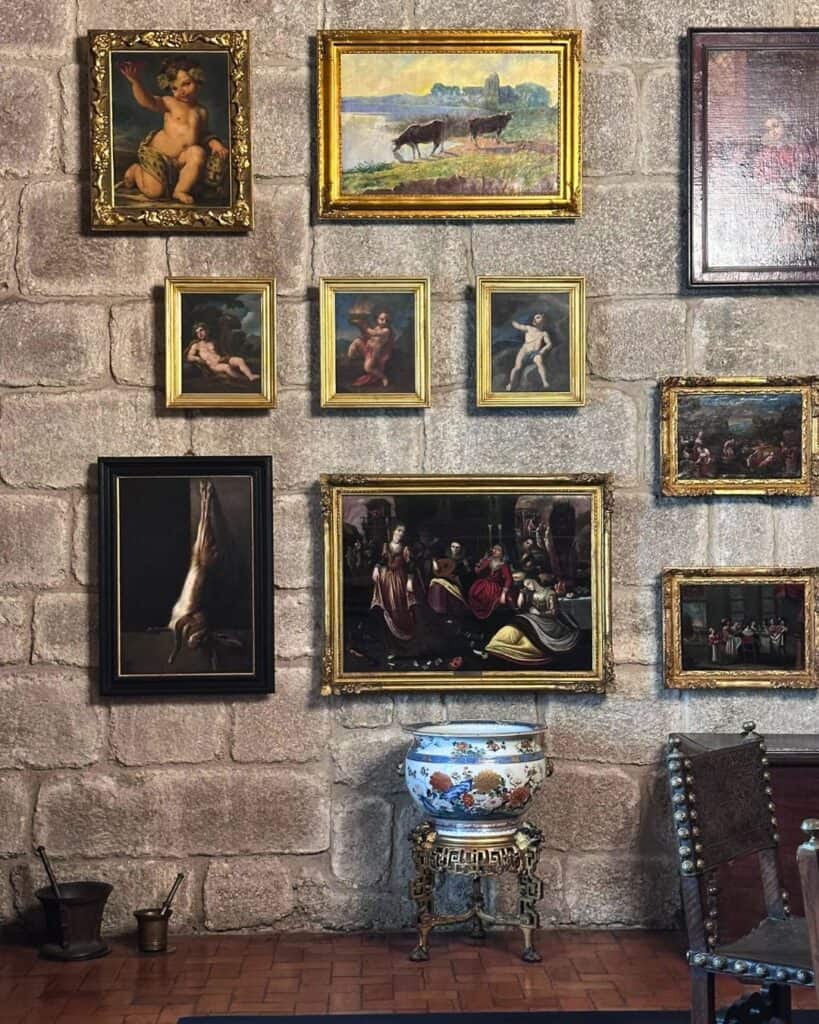
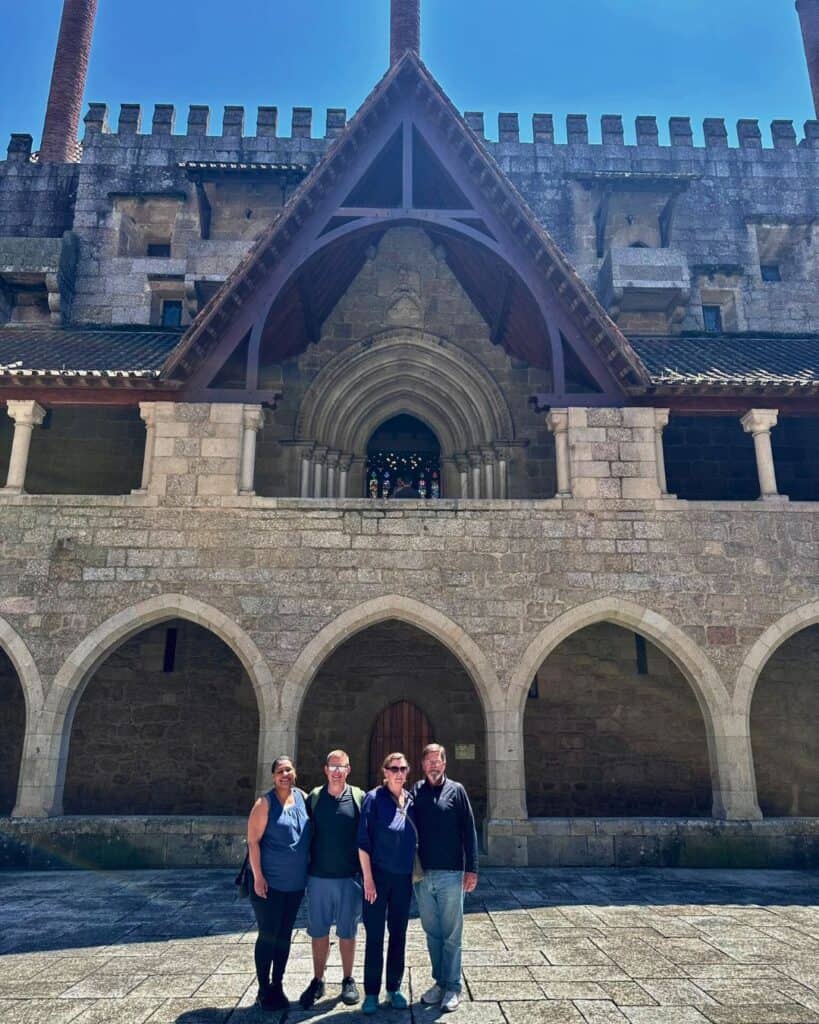
Do note that flash photography and videography are not permitted inside. Also, don’t touch that walls or an alarm will go off. I learned these rules the hard way. There was also a small gift shop that had very unique items perfect for a take home souvenir.
Torre da Alfândega
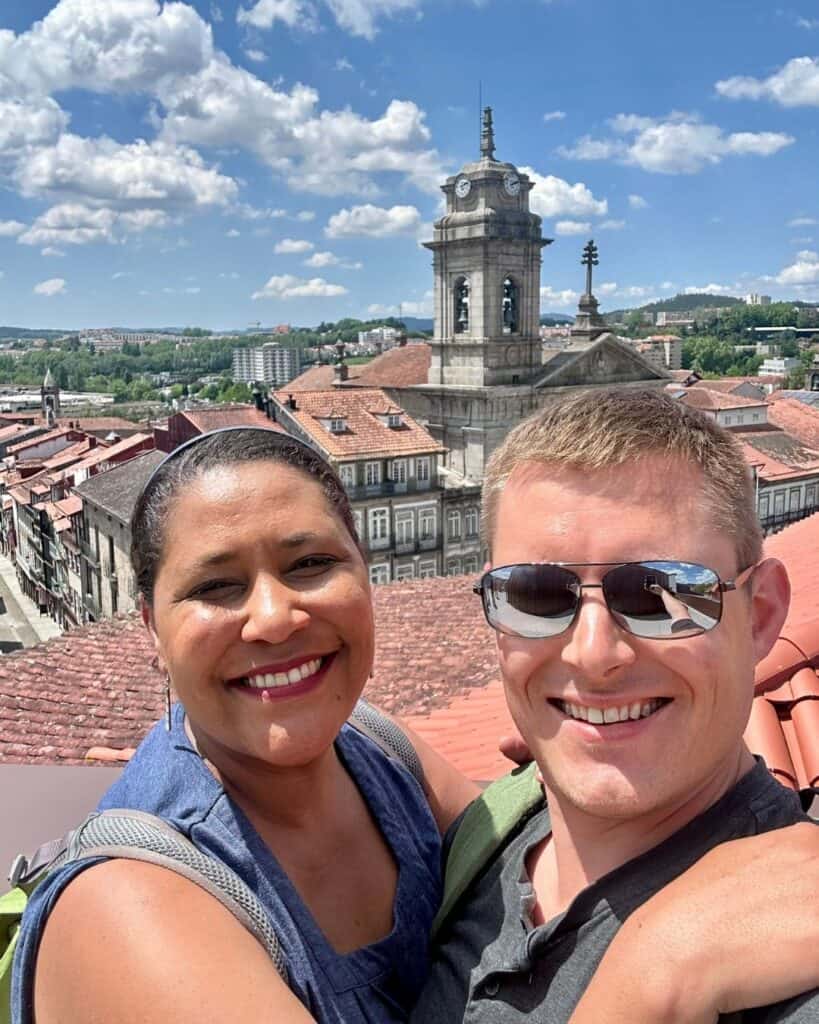
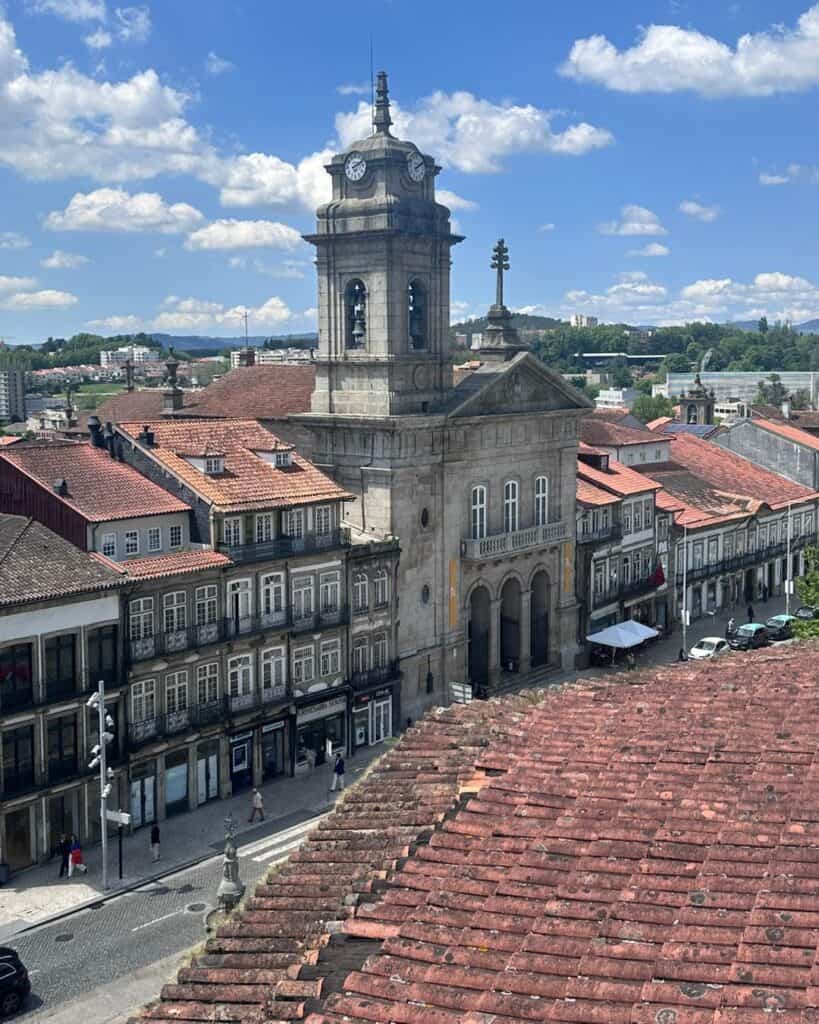
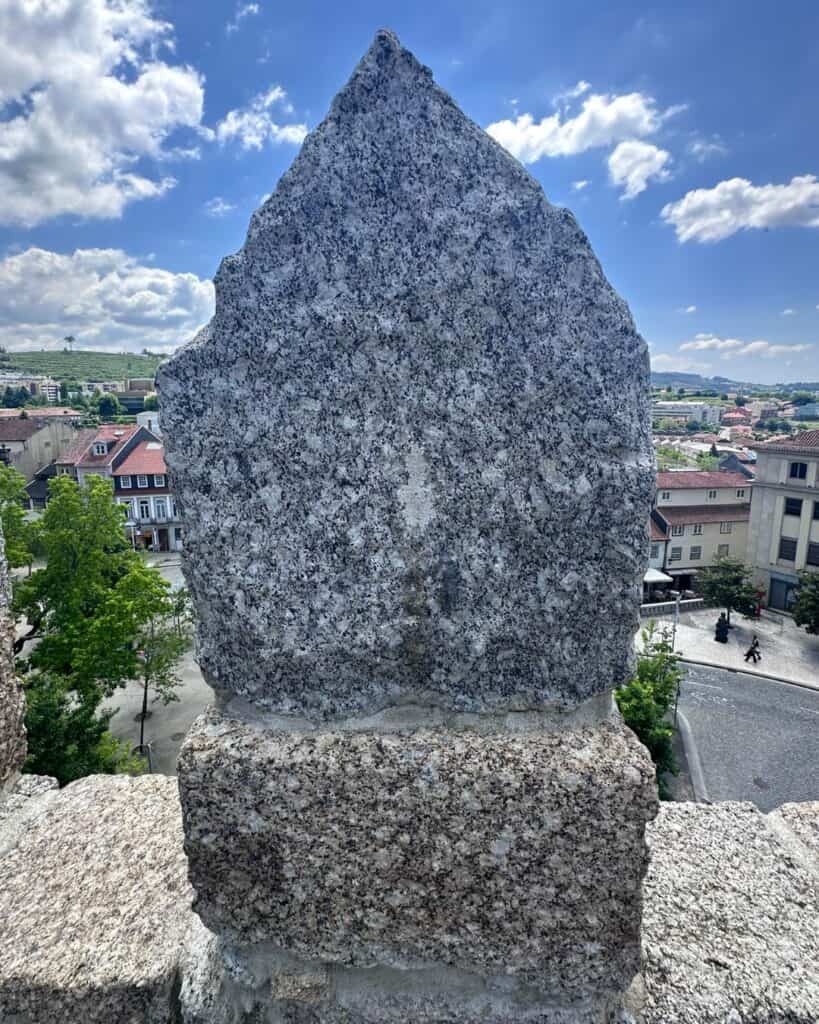
Next we visited Torre da Alfândega which takes you up several floors inside a historic tower that once formed part of the city’s medieval defenses. From the rooftop, you get amazing panoramic views over the old town.
Roaming Guimarães City Center
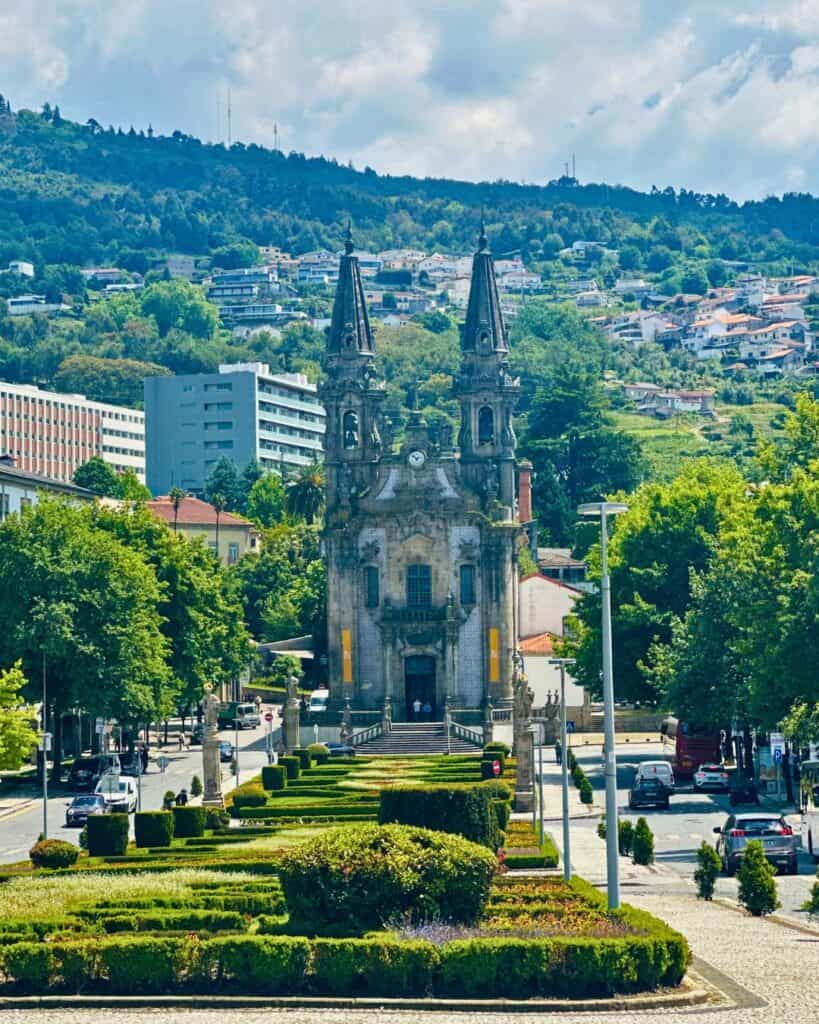
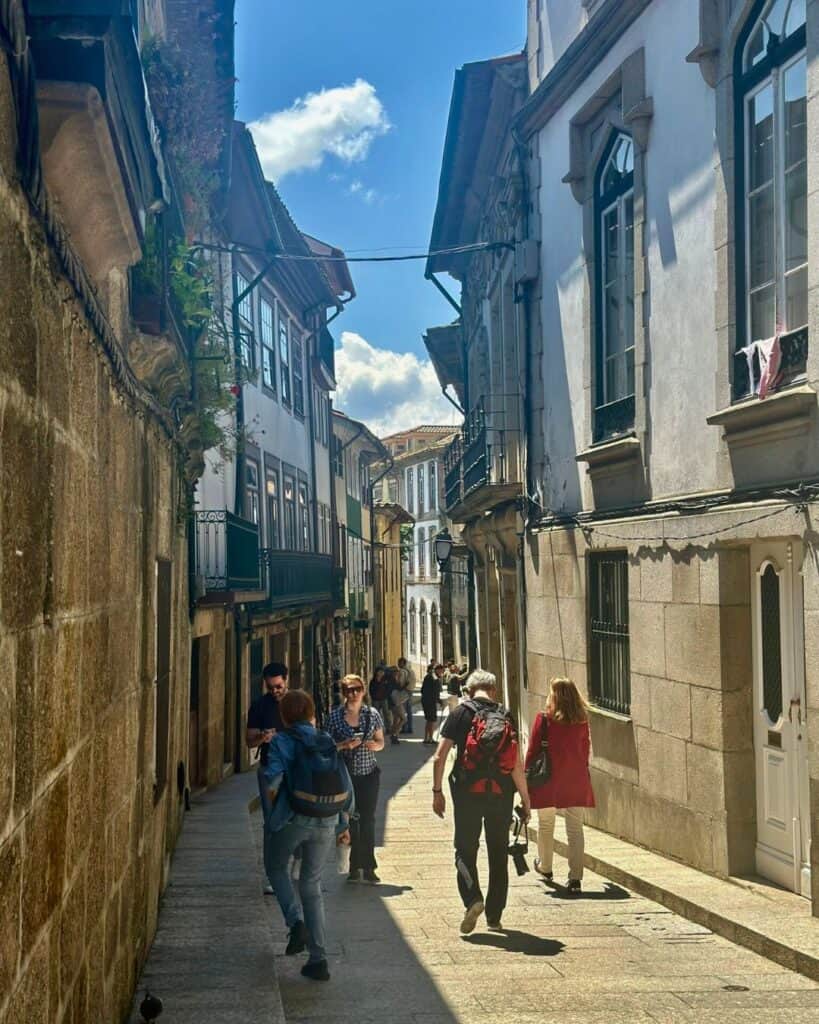
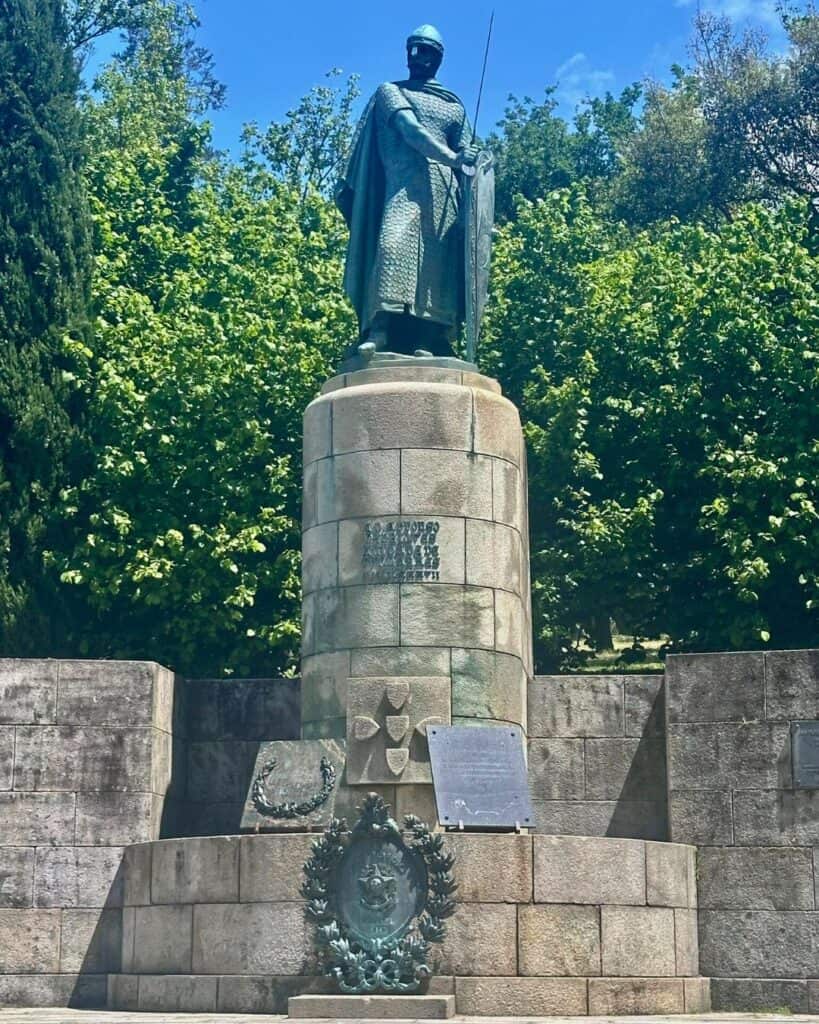
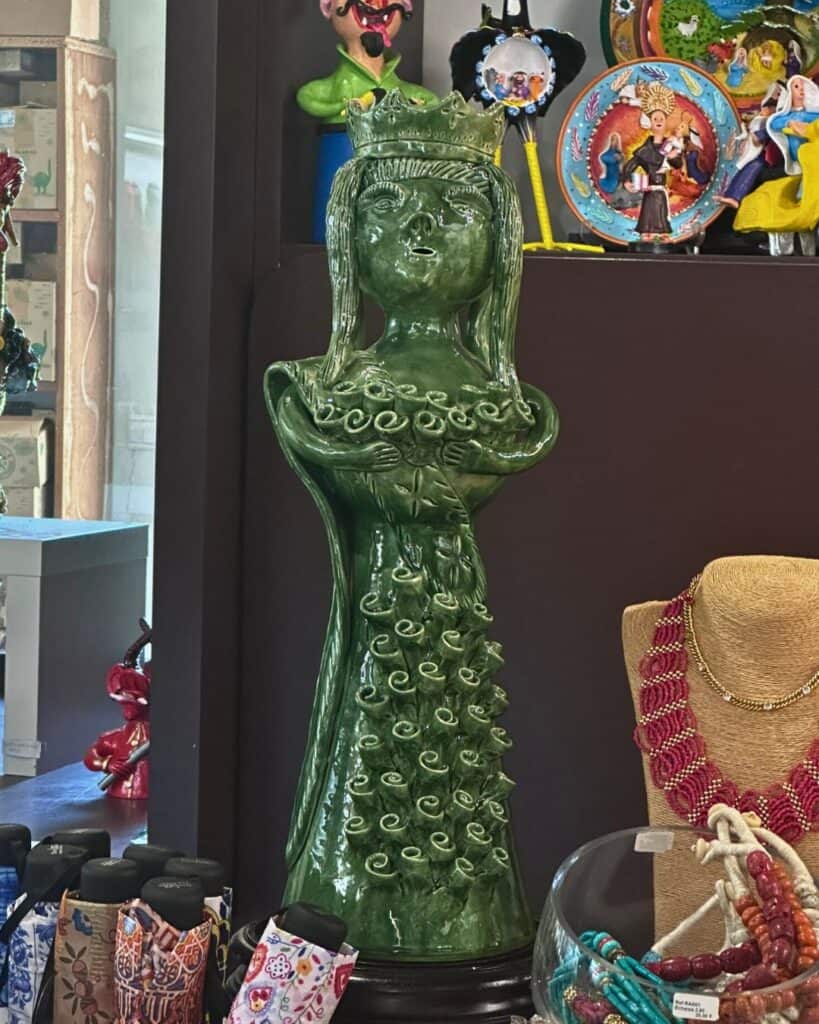
The city center of Guimarães is a UNESCO World Heritage Site, which is recognized for its preservation of an medieval urban landscape. Here we walked through its narrow streets and saw medieval houses, busy cafés, and artisan shops.
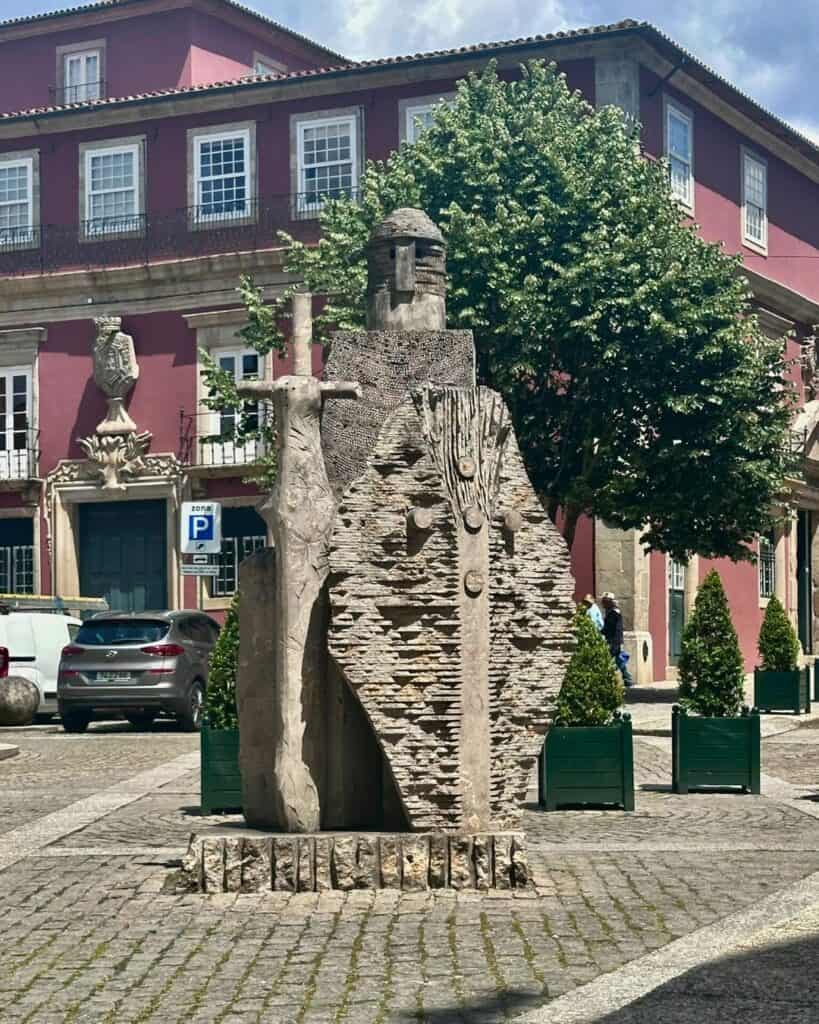
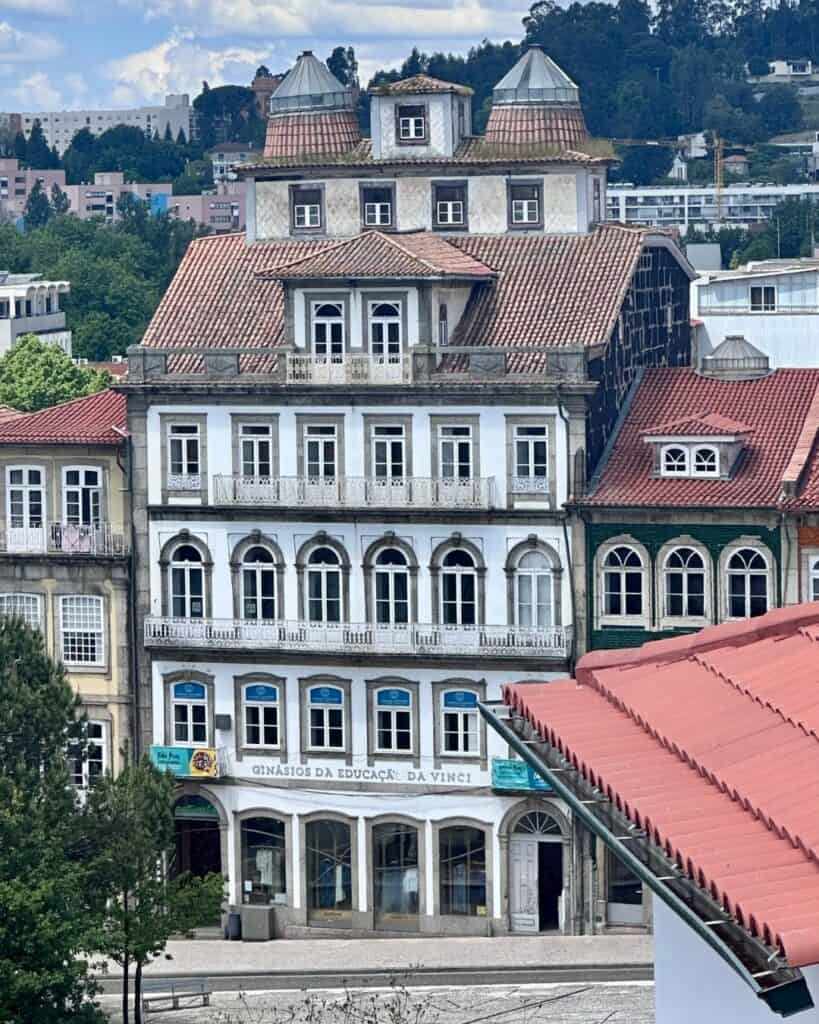
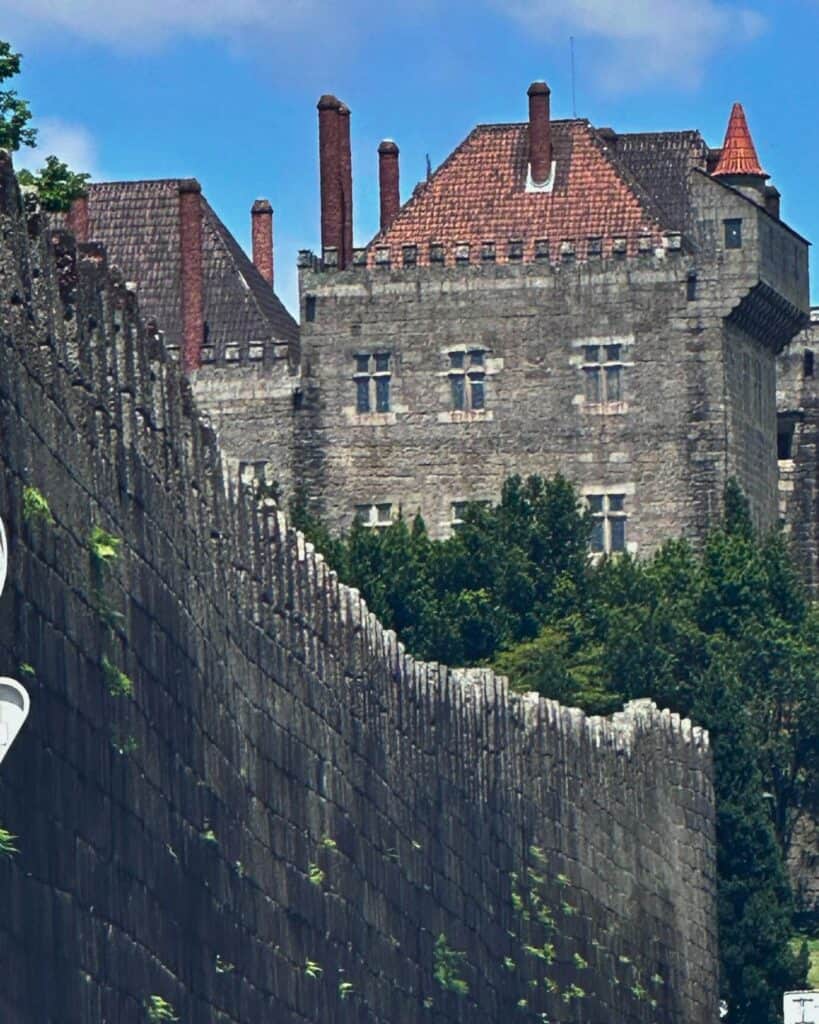
Largo da Oliveira is a beautiful medieval square in the heart of Guimarães’ historic center. It’s named after an ancient olive tree that once stood there and has been replanted as a symbol of the city’s heritage.
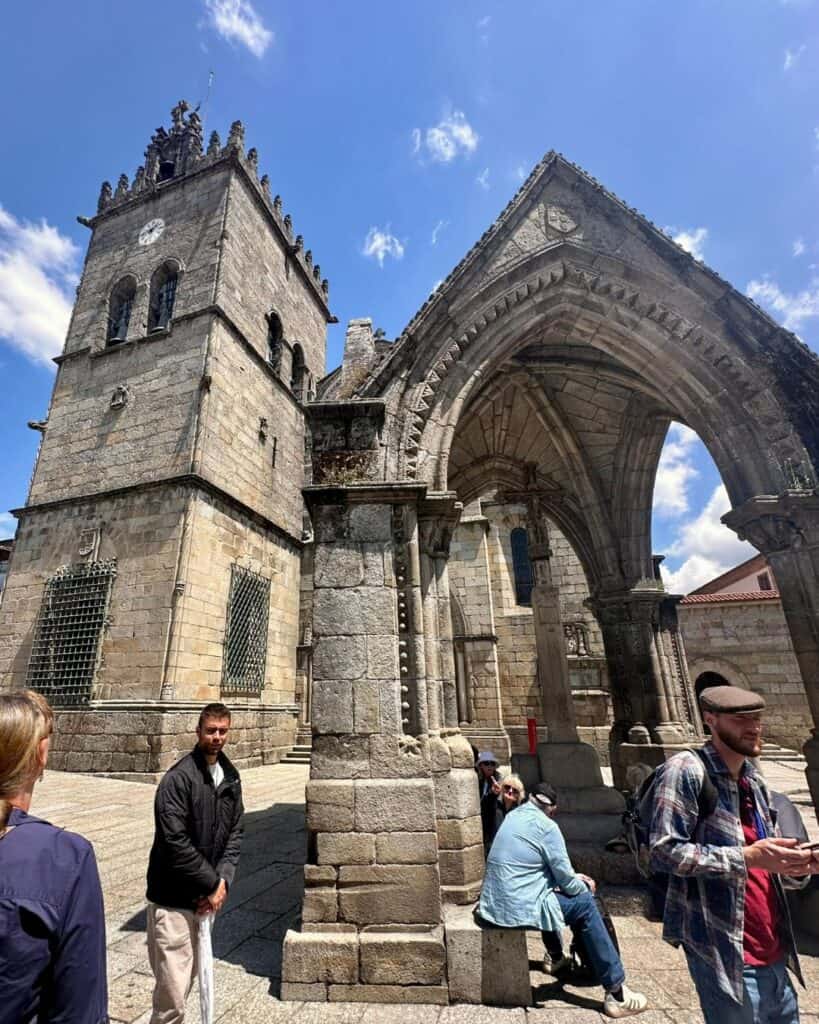
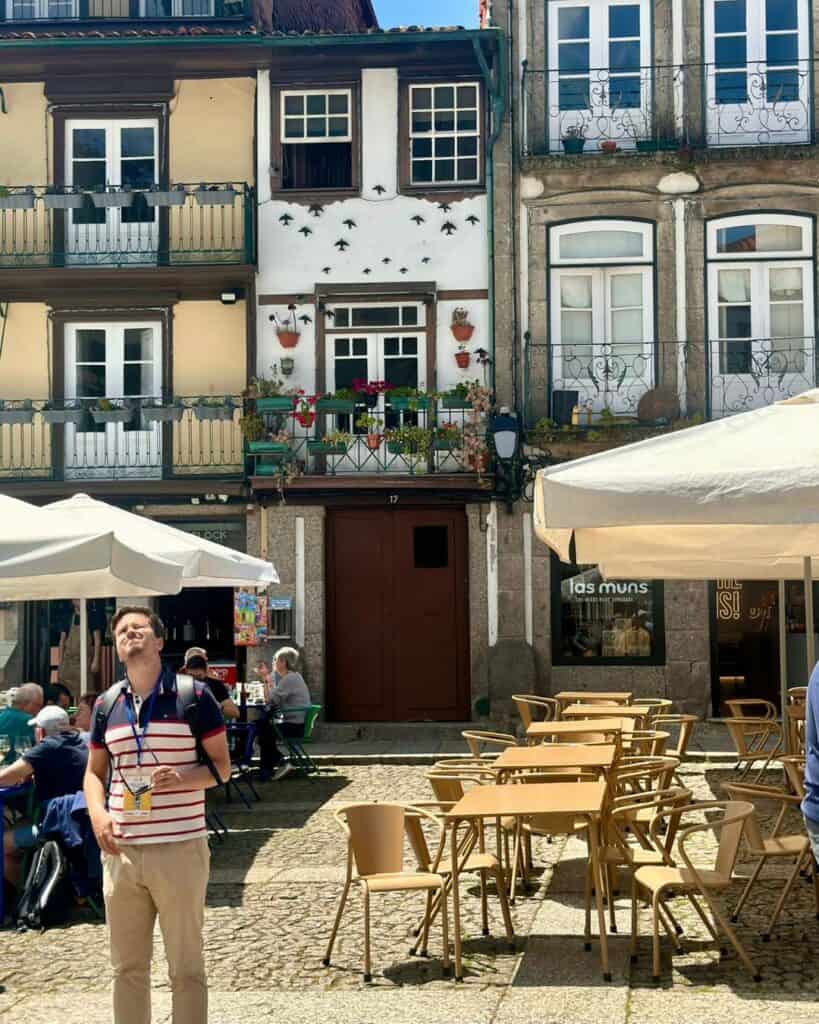
The square is also where the Gothic Padrão do Salado monument and the Church of Nossa Senhora da Oliveira reside.
Traditional Guimarães Pastries & Wine
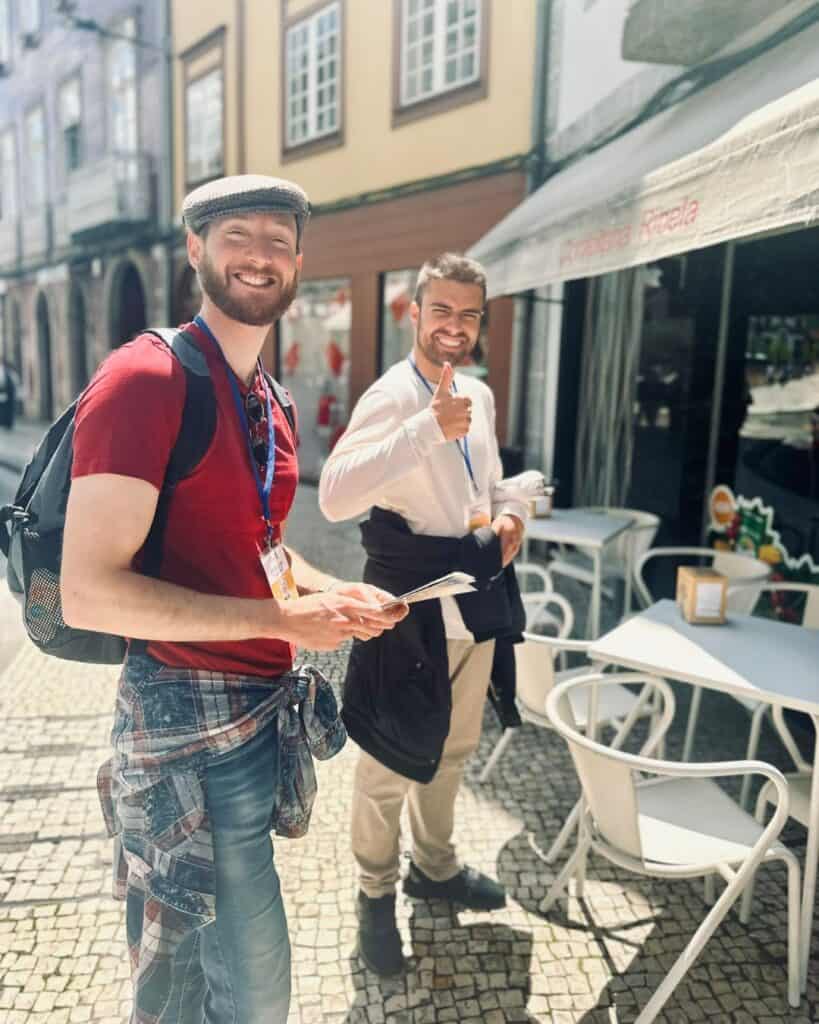
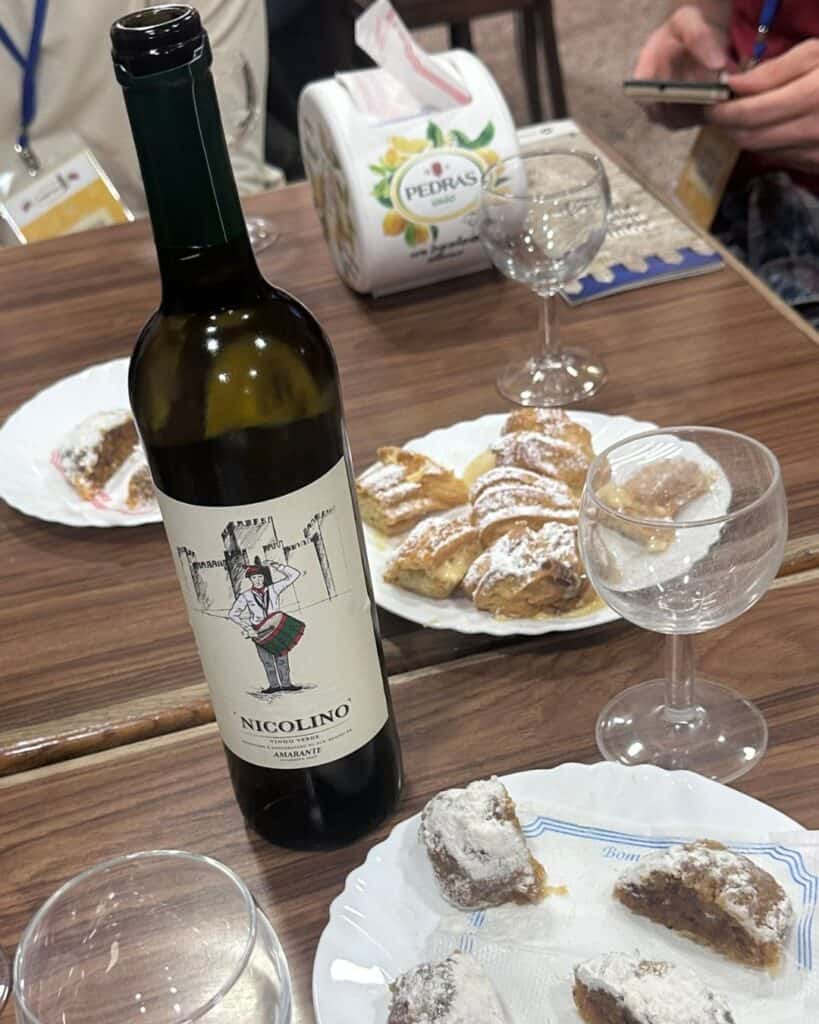
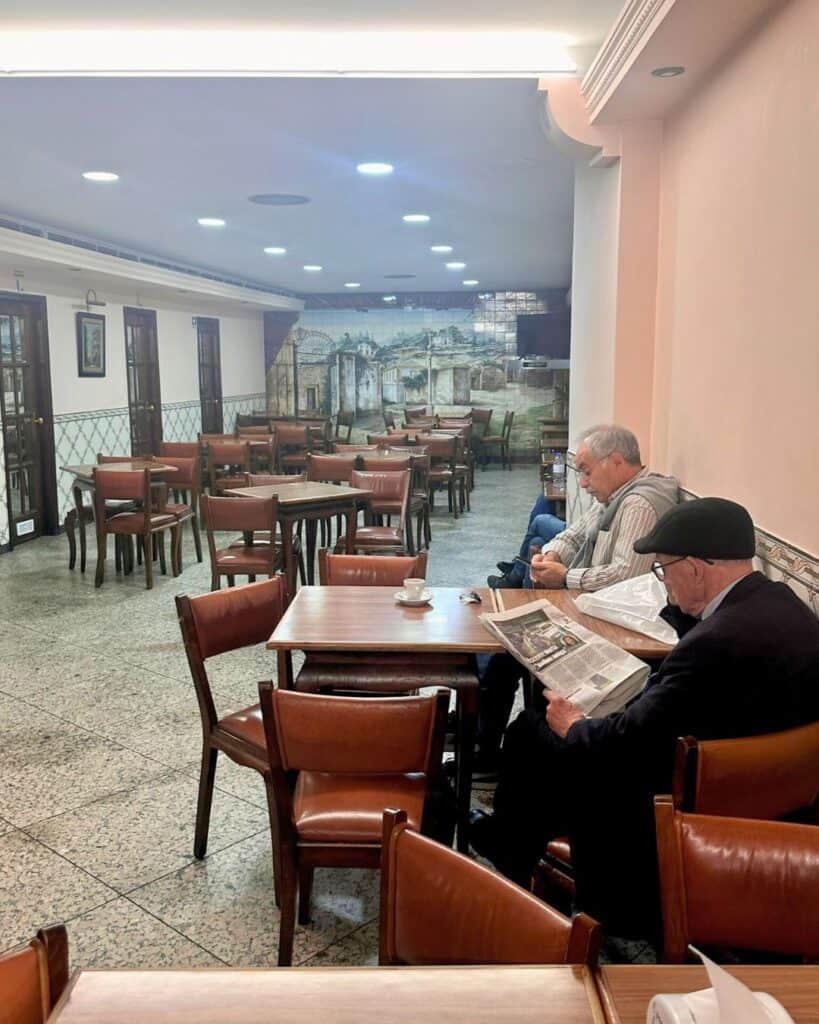
At the end of our tour, our guides took us to a local café called Confeitaria Ribela. Its been around for generations and sells delicious pastries like the soft, cinnamon-dusted “toucinho do céu.” We enjoyed conversation over several mouthwatering pastries and vino verde.
It was a wonderful way to end our day trip to Guimarães from Porto, and I cannot recommend InsighTours with Rui and his team enough!

Travel Journalist, Digital Publisher, Creator
Alexandrea Sumuel Groves is a Travel Journalist, Yahoo! Creator, MSN Partner, Society of American Travel Writers and North American Travel Journalists Association member, and the founder of Wander Worthy. She covers vacation destinations, travel news, and tourism trends.




